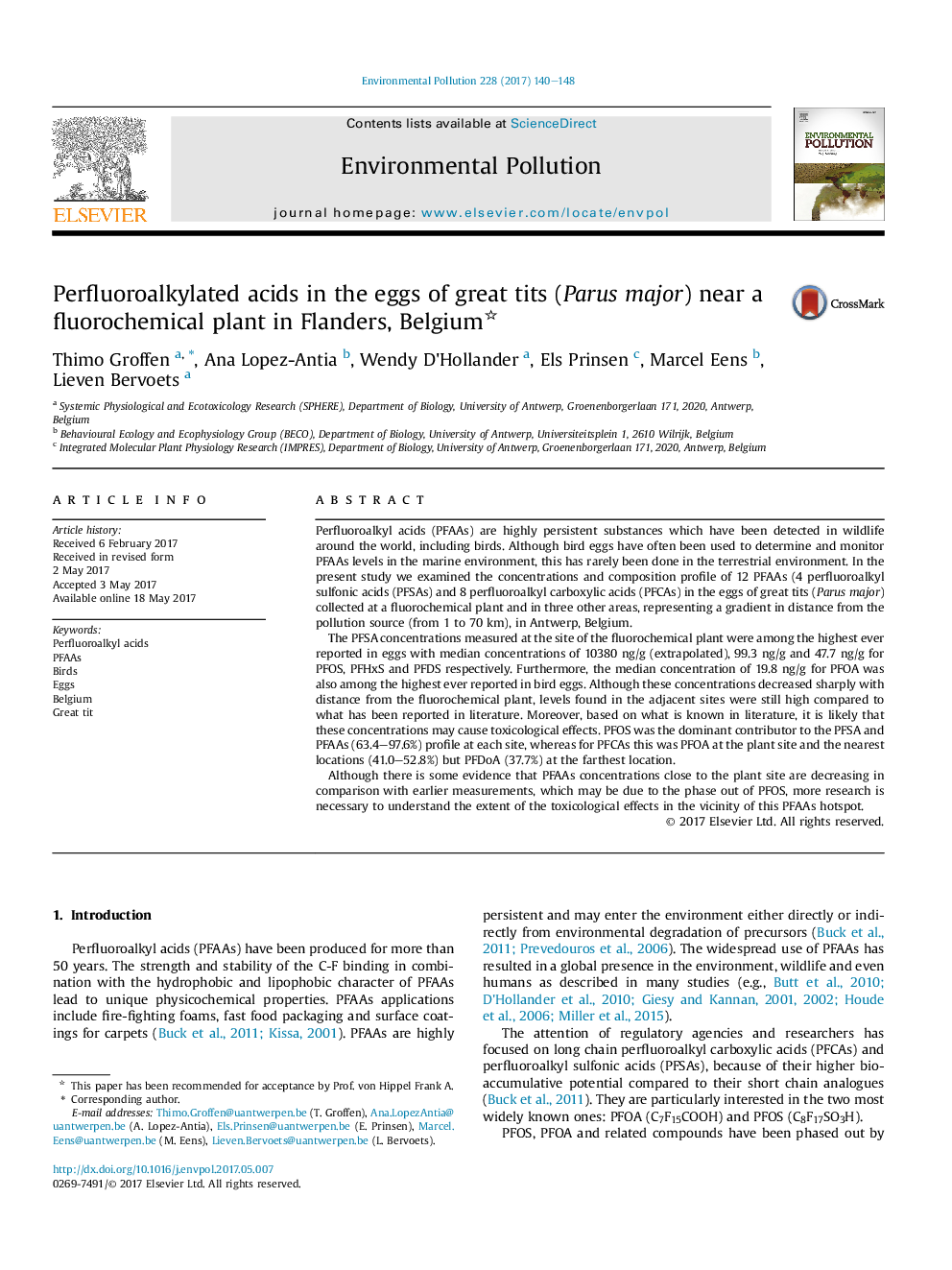| کد مقاله | کد نشریه | سال انتشار | مقاله انگلیسی | نسخه تمام متن |
|---|---|---|---|---|
| 5748862 | 1619145 | 2017 | 9 صفحه PDF | دانلود رایگان |

- Little is known on PFAAs levels in terrestrial wildlife including birds.
- Eggs of great tit were sampled along a distance gradient from a fluorochemical plant.
- PFAAs levels in eggs from the plant were among the highest observed in birds.
- Levels decreased sharply with distance from the plant but remained high.
- More research is necessary to address toxicological effects of these concentrations.
Perfluoroalkyl acids (PFAAs) are highly persistent substances which have been detected in wildlife around the world, including birds. Although bird eggs have often been used to determine and monitor PFAAs levels in the marine environment, this has rarely been done in the terrestrial environment. In the present study we examined the concentrations and composition profile of 12 PFAAs (4 perfluoroalkyl sulfonic acids (PFSAs) and 8 perfluoroalkyl carboxylic acids (PFCAs) in the eggs of great tits (Parus major) collected at a fluorochemical plant and in three other areas, representing a gradient in distance from the pollution source (from 1 to 70Â km), in Antwerp, Belgium.The PFSA concentrations measured at the site of the fluorochemical plant were among the highest ever reported in eggs with median concentrations of 10380Â ng/g (extrapolated), 99.3Â ng/g and 47.7Â ng/g for PFOS, PFHxS and PFDS respectively. Furthermore, the median concentration of 19.8Â ng/g for PFOA was also among the highest ever reported in bird eggs. Although these concentrations decreased sharply with distance from the fluorochemical plant, levels found in the adjacent sites were still high compared to what has been reported in literature. Moreover, based on what is known in literature, it is likely that these concentrations may cause toxicological effects. PFOS was the dominant contributor to the PFSA and PFAAs (63.4-97.6%) profile at each site, whereas for PFCAs this was PFOA at the plant site and the nearest locations (41.0-52.8%) but PFDoA (37.7%) at the farthest location.Although there is some evidence that PFAAs concentrations close to the plant site are decreasing in comparison with earlier measurements, which may be due to the phase out of PFOS, more research is necessary to understand the extent of the toxicological effects in the vicinity of this PFAAs hotspot.
187
Journal: Environmental Pollution - Volume 228, September 2017, Pages 140-148